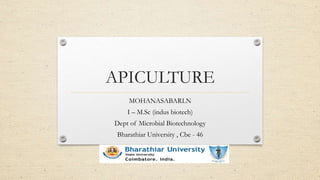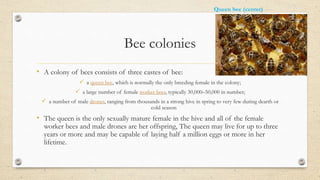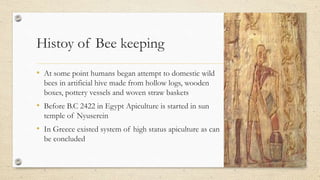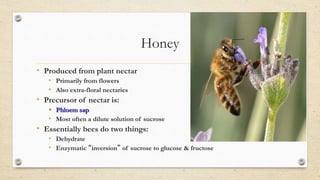The document provides an overview of apiculture, detailing the management of honey bee colonies, the role of different bee castes, and the history of beekeeping practices. It discusses advancements in hive design, particularly the movable comb hive invented by Lorenzo Lorraine Langstroth, which improved honey harvesting without harming the bees. Additionally, it addresses challenges in modern beekeeping, including the need for stock improvement, migratory practices, and the impact of diseases such as the Varroa mite.























